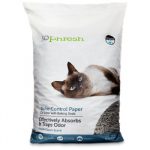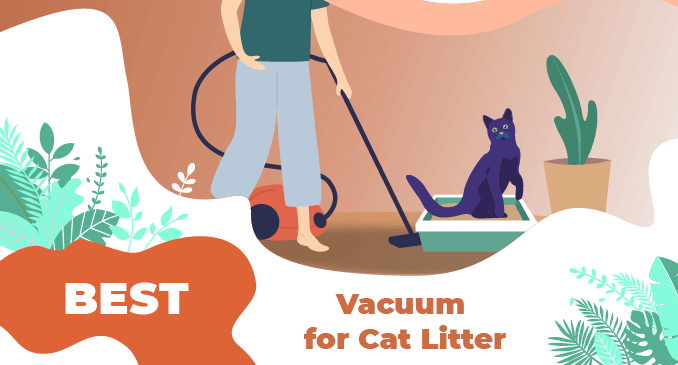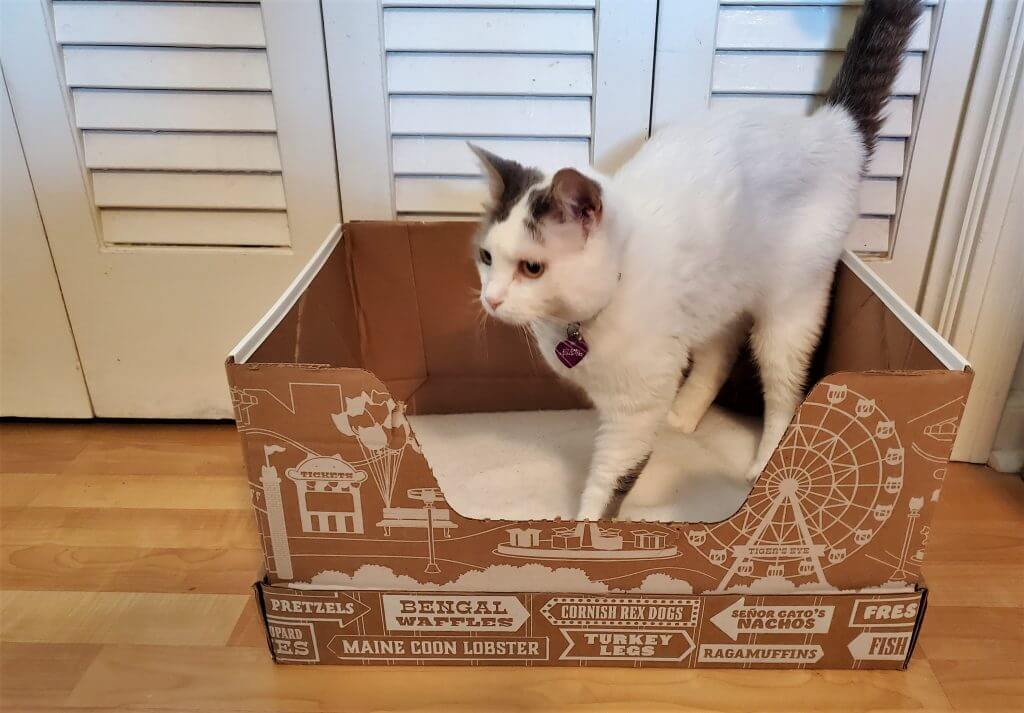The 5 Best Litter For Declawed Cats
This page contains affiliate links. We may earn money or products from the companies mentioned in this post through our independently chosen links, which earn us a commission.
Cat declawing, also known as onychectomy, means to surgically remove the cat’s third and final toe bones. This procedure is carried out on the front paws, and sometimes on the back paws. declawed Cats need softer texture litters due to their sensitive paws. Keep on reading to read our recommendations for the best kitty litter for declawed cats
As a matter of fact, the declawing of a cat is often done for the owner’s benefit, and not the cat’s.
The declawed cats could go through a lot of pain, discomfort, and complications during and after the declawing. Not to mention that this could even permanently mar them, physically and otherwise.
It is important to get the kind of litter box that’s easy for such sensitive cats to use. It is necessary to deal with litter avoidance issues and also to aid their declawed gait.
The best litter for declawed cats must provide them with comfort and safety while using the litter box. It should help them heal fast and must be well-textured with fine particles.
It should keep them clean at all times. Most veterinarians recommend paper litter for newly declawed cats because of its soft texture, zero-dust and non-clumping properties.
Not to forget that corn, wood, wheat and grass litters are only recommended when the cat’s wounds from declawing have completely healed.
At the same time, for newly declawed cats, clay litter must be completely avoided because it is usually too harsh, dusty and has fine granules. These properties could cause serious infections and discomfort for the cats.
To help with this process of finding the best litter for declawed cats, here are some suggestions.
Compare Best Litter For Declawed Cats
|
Runner Up
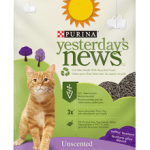
2. Yesterday's News Softer Texture Unscented Non-Clumping Paper Cat Litter |
Premium Choice

3. Dr. Elsey's Precious Cat Ultra Unscented Clumping Clay Cat Litter |
Best For Odor Control

4. World's Best Multi-Cat Unscented Clumping Corn Cat Litter |
Best For Budget
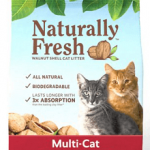
5. Naturally Fresh Multi-Cat Unscented Clumping Walnut Cat Litter |
|
|
Material
Recycled Paper |
Material
Recycled Paper |
Material
Clay |
Material
Corn |
Material
Walnut |
|
Type
Non-Clumping |
Type
Non-Clumping, Unscented |
Type
Clumping, Unscented |
Type
Clumping, Flushable, Unscented |
Type
Clumping, Unscented |
|
Tracking
9.5/10 |
Tracking
9.1/10 |
Tracking
8.5/10 |
Tracking
8.5/10 |
Tracking
8.5/10 |
|
Absorption
9.5/10 |
Absorption
9.5/10 |
Absorption
9.0/10 |
Absorption
8.5/10 |
Absorption
8.5/10 |
|
Odor control
10/10 |
Odor control
9.5/10 |
Odor control
9.0/10 |
Odor control
9.0/10 |
Odor control
8.5/10 |
So Phresh Odor Control Paper Pellet Cat Litter
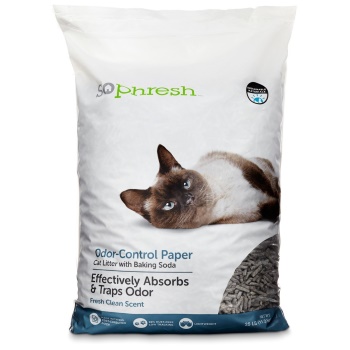
Product Info
- Material: Recycled Paper
- Type: Non-Clumping
- Tracking: 9.5/10
- Absorption: 9.5/10
- Odor control: 10/10
- 99.9% Dust-free
- Lightweight pellets
- Eco-Friendly
- Powerful clumping to control odors
- Tracks easily
- Quite expensive
Yesterday's News Softer Texture Unscented Non-Clumping Paper Cat Litter
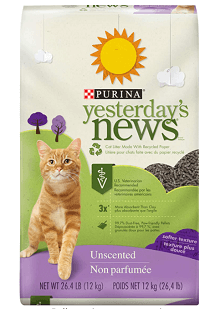
Product Info
- Material: Recycled Paper
- Type: Non-Clumping, Unscented
- Tracking: 9.1/10
- Absorption: 9.5/10
- Odor control: 9.5/10
- Little dust
- Absorbs moisture very well
- Great for allergies
- Controls odor averagely
- Low tracking
- Eco-friendly
- No clumping
- Needs frequent cleaning
- Soiling is hard to detect
Dr. Elsey's Precious Cat Ultra Unscented Clumping Clay Cat Litter
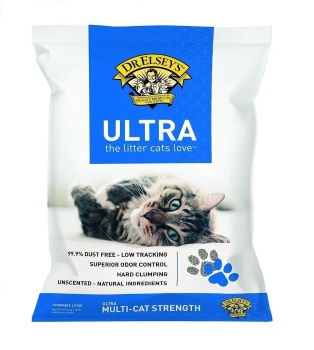
Product Info
- Material: Clay
- Type: Clumping, Unscented
- Tracking: 8.5/10
- Absorption: 9.0/10
- Odor control: 9.0/10
- Nice texture for declawed paws
- Forms hard clumps for easy scooping
- Hypoallergenic
- No odor or smell
- No harmful proteins or chemical fragrances
- Tracks a bit more than other litters
- Has larger granules
- Quite heavy
- Gets awfully dusty as the litter ages
- Requires timely litter replacement
World's Best Multi-Cat Unscented Clumping Corn Cat Litter
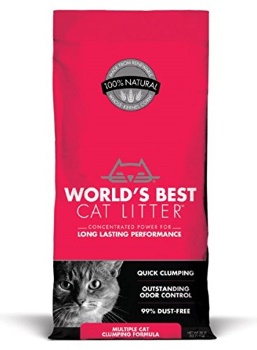
Product Info
- Material: Corn
- Type: Clumping, Flushable, Unscented
- Tracking: 8.5/10
- Absorption: 8.5/10
- Odor control: 9.0/10
- Absorbs moisture very well
- Great litter texture
- Lightweight
- Eco-friendly
- Flushable
- Little tracking
- Expensive
- Bad urine clumping
- Not for recently declawed cats
Naturally Fresh Multi-Cat Unscented Clumping Walnut Cat Litter

Product Info
- Material: Walnut
- Type: Clumping, Unscented
- Tracking: 8.5/10
- Absorption: 8.5/10
- Odor control: 8.5/10
- Gentle on the cat’s paws, fur and skin
- Controls odor very well
- Very little tracking
- Flushable
- Quite dusty
How To Chose The Best Cat Litter For Declawed Cats?
Considering the fact that declawed cats are quite sensitive, aggressive and uncomfortable, it is important to pick a litter that will make them unopposed to using the litter box. For the litter for declawed cats, here are a few properties that you should consider in order to buy the best litter for them.
- The Litter Should Have Low-Dust- This is particularly important so as to not contaminate the wounds after the bandages have been taken off. It is advisable to avoid clay litter products because of their dusty and fine-grained litter. The low dust will keep your cat’s lungs healthy, and help avoid allergic reactions. More dust means more reasons to make your cat uncomfortable considering the discomfort it is already experiencing from the surgery.
- The Litter Should Not be Sticky- While the declawed cat’s wound is still healing, it is the best to avoid clumpy and sticky. That’s because such litter usually sticks to the cat’s toes and wounds, and that may lead to infection. Also, the sticky litter that’s stuck to the cat’s toes will cause tracking. As a result, it will create a problem for the owner.
- The Litter Should Not Smell- Trying to encourage newly declawed irritable cats to use the litter is hard enough, having litter with stinky smells or strong scents may only further irritate the cat. As a result, the cat may completely avoid using the litter box.
- The Litter Should be Soft- Soft litter will definitely be pleasant for your cat’s tender paws. This will provide some form of relief for your declawed cat.
- The Litter Should be Dry- Cats being very clean animals will not like to use the wet and messy litter. To encourage your declawed cat to use the litter, you have to keep it moisture-free.
Final Thoughts
To begin with, the declawing of cats is a severely painful process that can result in permanent damage and harmful consequences for them. Also, these consequences are more severe when the surgery goes wrong.
Therefore, it may probably be much easier to see some of your favorite furniture scratched than to watch your cat go through so much pain. That’s because scratching is a major part of a cat’s lifestyle, and so they can simply be provided with scratching surfaces like scratching posts and mats.
You can also train your cat to not scratch forbidden surfaces like your skin and furniture. At the same time, you can also consider other alternatives like nail caps and regular trimming of nails. That’s primarily to avoid the potential damage that declawing can cause to your cat. On the other hand, if you have already declawed your cat then you must take the necessary steps to ease the cat’s discomfort. One of those measures is to give your declawed cat the best litter.


